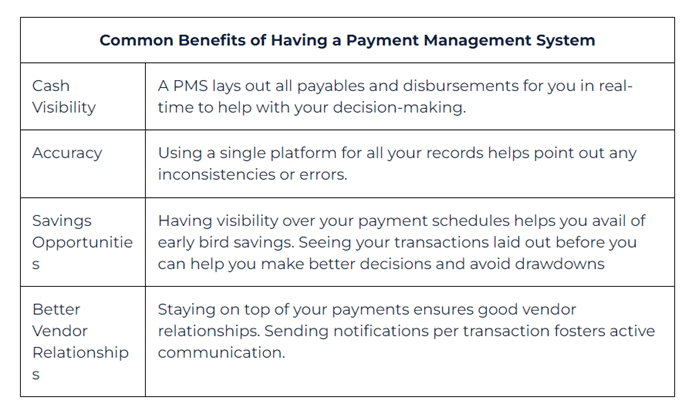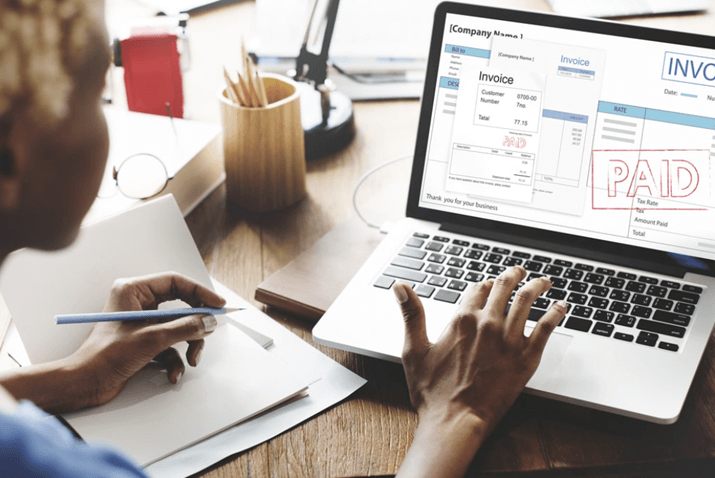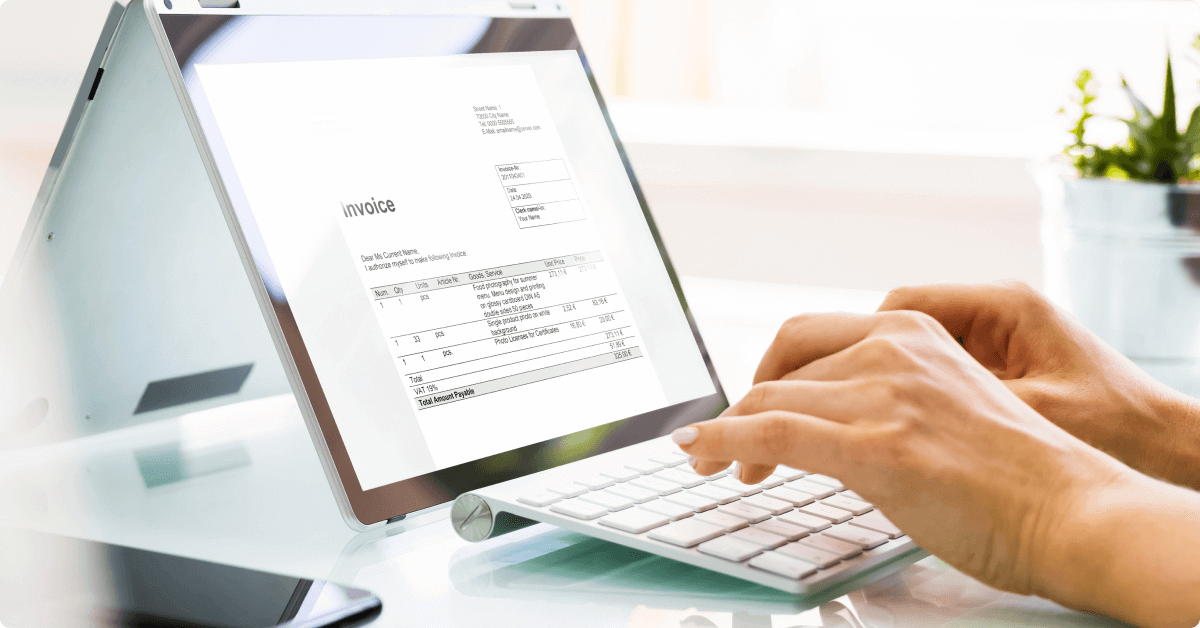If you’re searching for a payment management system that aligns with your business requirements, you’re in a favorable position. In 2019, the value of digital transactions reached $4.1 trillion worldwide. Researchers expect this number to grow at a rate of 13% until 2023.
Numerous online payment management systems are available, each offering a unique array of features. However, the abundance of choices might make the selection process overwhelming. Fortunately, this article aims to assist you in navigating the process effectively.
In this article, we will explore effective strategies to identify the highest-rated payment management system tailored to your business needs.
What is a Payment Management System?
A payment management system refers to a software or platform that facilitates the processing and management of financial transactions within a business. It is designed to streamline and automate various aspects of payment processing, including accepting payments from customers, handling refunds or chargebacks, reconciling transactions, and generating reports.
Payment management systems typically integrate with different payment methods, such as credit cards, debit cards, mobile wallets, and online payment gateways. They provide businesses with the infrastructure and tools necessary to securely process payments, manage customer information, and track financial data.

How to find best Payment Management Software
If you are thinking about what to look for while finding the best payment management software for your small business, you should follow these strategies:
Assess your needs:
Start by identifying your specific payment management requirements. Determine what features and functionalities are essential for your business, such as invoicing, recurring billing, or payment gateway integration.
Research and compare options:
Look for reputable payment management software providers with positive reviews and a track record of delivering reliable services. Some useful resources for research include:
- Software review websites like Capterra or G2 that provide user reviews and comparisons of different payment management software solutions.
- Industry forums and communities where business owners discuss their experiences and recommendations for payment management software.
Consider integration:
Ensure that the payment management software you choose is compatible with your existing systems, such as your accounting software or e-commerce platform. This will help streamline your operations and avoid potential integration issues. Check the software provider’s website or contact their support team to inquire about integration capabilities.
Prioritize security:
Select payment management software that prioritizes robust security measures to protect sensitive customer data and payment information. Look for features such as encryption, tokenization, and compliance with industry security standards like PCI DSS.
Evaluate pricing:
Consider payment management software solutions with transparent pricing structures and fees. Look for providers that offer clear information about their pricing plans and any additional charges for features or transaction volumes. Tools like:
- Pricing comparison websites like CardFellow or Merchant Maverick can help you compare the pricing of different payment management software solutions.
- Cost calculators provided by software vendors to estimate your potential costs based on your business size and transaction volume.
Seek recommendations:
Reach out to other business owners in your industry or professional networks for recommendations on payment management software. You can also read reviews and testimonials from other users on platforms like Trustpilot (www.trustpilot.com) or Software Advice.
Use free trials or demos:
Take advantage of free trials or demos offered by payment management software providers. This allows you to test the software’s functionality, user interface, and overall suitability for your business before making a commitment. Check the provider’s website for trial options or contact their sales team to request a demo.
Plan for scalability:
Choose payment management software that can accommodate your business’s future growth. Look for solutions that offer scalability and the ability to handle increased transaction volumes or additional features as your business expands.
Assess customer support:
Look for payment management software providers that offer responsive customer support and training resources. Prompt and reliable support can be crucial if you encounter any issues or need assistance with the software.
Support channels:
Check if the software provider offers multiple support channels such as live chat, email, or phone support. Look for providers with quick response times and knowledgeable support staff.
Documentation and tutorials:
Explore the provider’s website for comprehensive documentation, user guides, and video tutorials that can help you and your team get up to speed with the software.
Involve your team:
Gather input from team members who will be using the payment management software. Consider their needs, preferences, and any specific features they require. Involving your team.
Pro Tip
The most effective strategy to manage business payments is to develop a thorough system that allows you to make every sale to every customer while also ensuring that you get paid on time.
By carefully considering these factors, you can select a payment management system that aligns with your requirements, enhances financial operations, and provides a positive experience.
Standard Features of a Payment Management System
Every payment management system has its own unique features. Every business requires a strong selling point. However, all good payment management systems share some characteristics. Consider these to be the bare necessities that could improve rather than complicate your operation.
It is best to choose a payment management system that includes all of the necessary characteristics. Not only will it save you time, but it will also save you money. Here are some aspects to consider for your payment system.
Invoice Management
Every business transaction begins with an invoice. Your payment management system should allow you to create and manage invoices for your clients. 64.4% of small and midsized businesses in the United States used software to streamline their accounting.
There are two alternatives here. You can manually generate invoices using the billing information clients enter while purchasing. You could also go the automatic route. When the client confirms payment, the payment management system generates the invoice.
The same is true for inbound and outbound payments. A payment management system should assist you in creating and tracking invoices for the company’s disbursements. You can use it to pay vendors or compensate staff for business expenditures.

Payment processing
Your payment management system should be able to process payments after invoice generation. It should connect to the client’s bank and transfer funds to your account.
The most efficient systems can handle payment requests in seconds. It all starts at the point of purchase, when the buyer chooses their payment option.
The fund transfer will be facilitated after the payment management system connects to the client’s bank account. Thus concludes the payment processing, which can be successful or unsuccessful. If the payment fails, so does the transaction, and the client can try again.
Invoice and Transaction Recording and Tracking
All your invoices should be tracked and managed by your payment management system. Consider it a one-stop shop for all your financial transactions.
Having all your transactions in one location makes it easier to keep track of everything and prevent missing a payment. A quick scan should reveal which payments are pending or completed.
Receipt Generation
Your payment management system should be able to produce receipts for every transaction. These are required for every business’ transaction records or for the personal usage of clients.
The ability to generate both paper and digital receipts would be a nice addition. Every business has varied requirements and may require either or both to function.
Reporting
Analysis and reporting are critical components of any business’s action plans. Payment management system provides robust and extensive data to merchants, as well as market insights. Real-time reports on client involvement and behavior can help your company make educated marketing strategies and decisions.

Best Payment Management Software
The best payment management tools will vary from business to business, as each has its own needs and wants. The following list covers payment management systems for medium and small-size businesses, covering key features, so you can choose the best software for your business.
QuickBooks
QuickBooks offers a wide range of products and features which cater to businesses of all sizes. As such, their plans vary by need and price. Plans start as low as $30 per month, which includes 10 features, but can be as much as $200 per month with 24 features.
Stripe
Stripe’s payment platform helps you accept credit cards, debit cards, and popular payment methods around the world. Its easy-to-use APIs, no-code payments options, and software solutions enable you to launch a company, experiment to find product-market fit, and grow and scale revenue quickly.
FreshBooks
FreshBooks is an online accounting and invoicing platform that saves you time, automates your admin, and keeps your books organized and your business looking professional. FreshBooks believes financial recordkeeping should be easy and fast, but still detailed enough to satisfy your accountant.
Xero
Xero focuses on catering to small businesses. Xero provides a comprehensive payment management solution that brings together all the essential elements in one user-friendly platform. It allows businesses to conveniently handle invoices, manage accounts, and automate tasks, simplifying financial operations. It offers a free trial and plans as low as $12 a month.
Weave
Weave is a payment management solution that is popular in the healthcare business. They provide software solutions for dentistry clinics and veterinarians, but their services are available to anyone. Weave also offers specialized software for salons, plumbers, pest control providers, and electricians.
Frequently Asked Questions
Is it important for a small business to have a payment management system?
Yes. A payment management system ensures proper monitoring and execution of business transactions. This is an essential practice for businesses of all sizes.
What are the key goals of the payment management process?
Its main goals are to streamline payments, maintain records, and create necessary receipts. Being able to generate reports and analytics is also a good bonus.
Conclusion
Selecting the right payment management system is important for the success of your small business. With the increasing value of digital transactions worldwide and the expected growth in the coming years, having an efficient and reliable payment management system is more important than ever.
By following the strategies outlined in this article, you can find the best payment management software that aligns with your business requirements. So, take the time to evaluate your options and choose the payment management software that will support the growth and success of your small business.

